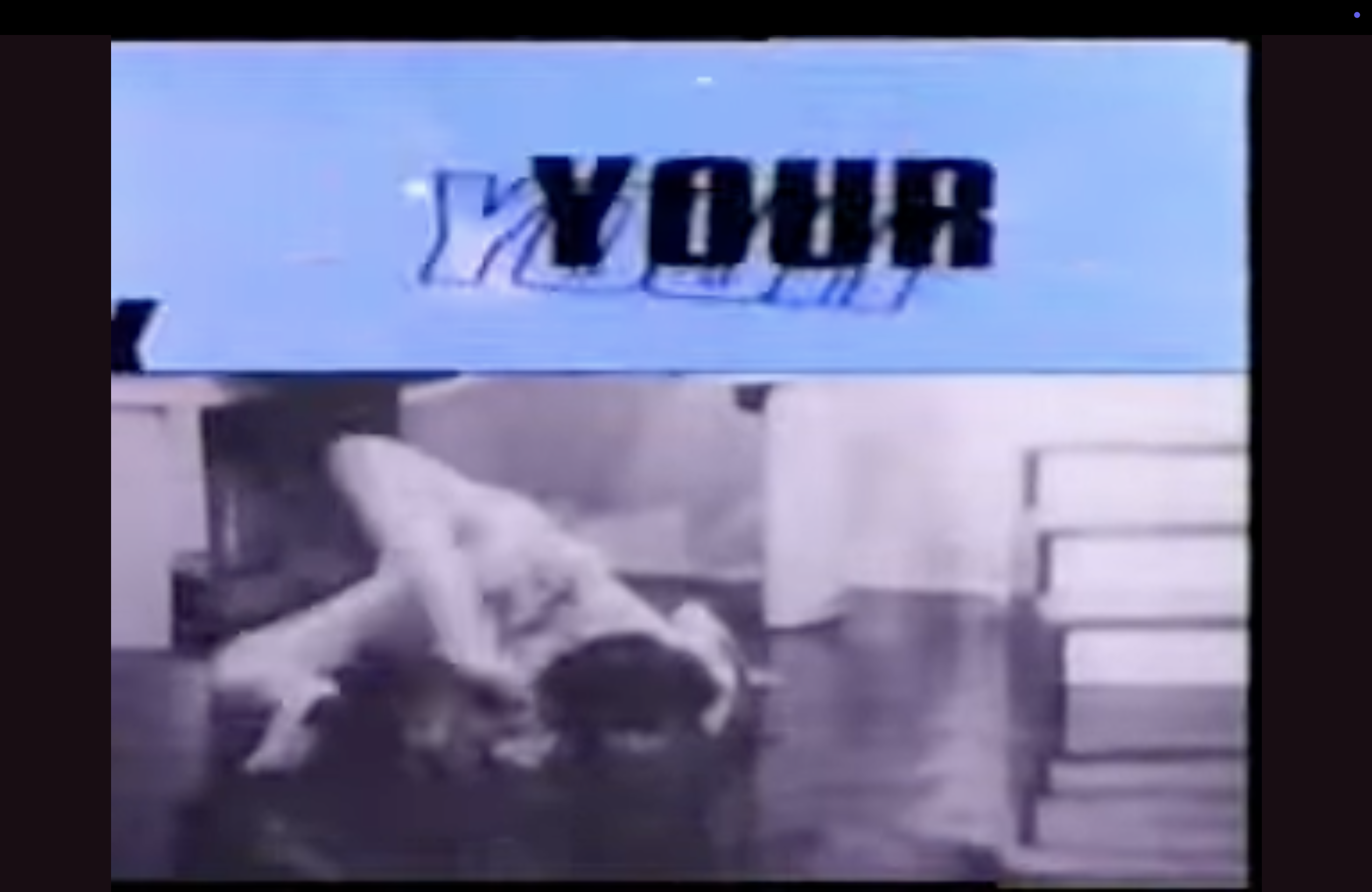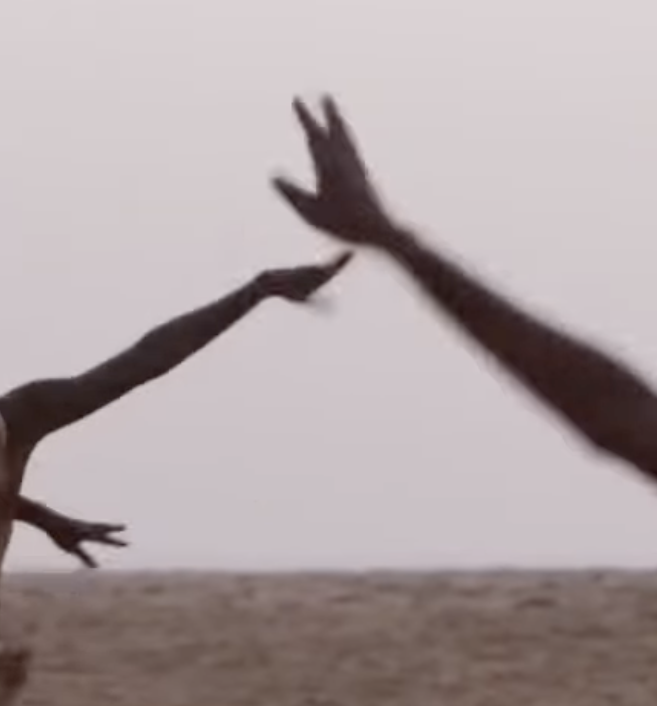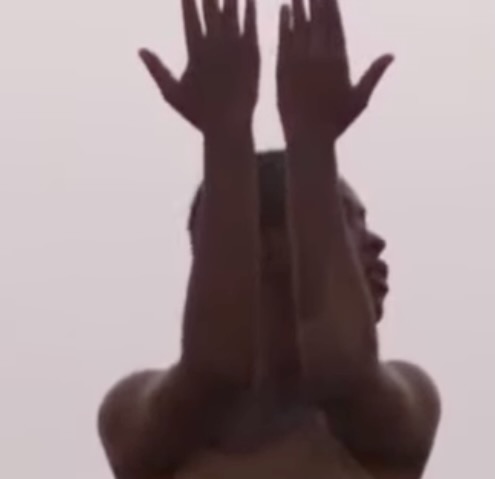Spring
By Esther Kondo Heller
In Middle English, it took on the role of causal sprenge, from Old English sprengan (as still in to spring a trap, etc.). The meaning ‘to cause to work or open,’ by or as by a releasing of the spring mechanism, is from 1828.1
There are stories about the dancing that went on at Dschungel, a club in West Berlin frequented by such celebrities as David Bowie, Mick Jagger, and Nina Hagen, as well as local punks, scene kids and my mother. Author and journalist Paulina Czienskowski’s parents met at Dschungel, where her mother worked as bartender and her father was a regular, and she claims that the artist formerly known as Prince once danced by himself to “Carmina Burana” on an otherwise empty dance floor. I like to imagine that scene in my head, to replay that clip of him dancing.
Photography wasn’t ever allowed in the club, so the only images we have of what went on inside are pictures we paint in our minds. As I write, my imagination swirls with these stories; entangled with the sounds of voices, bodies shuffling in dance, and music. This might be what Toni Morrison describes in The Bluest Eye, when Claudia and her sister Frida listen to their mother speak with her friends:
“Their conversation is like a gently wicked dance: sound meets sound, curtsies, shimmies, and retires. Another sound enters but is upstaged by still another: the two circle each other and stop. Sometimes their words move in lofty spirals; other times they take strident leaps, and all of it is punctuated with warm pulsed laughter—like the throb of a heart made of jelly. The edge, the curl, the thrust of their emotions is always clear to Frieda and me. We do not, cannot, know the meanings of all their words, for we are nine and ten years old. So, we watch their faces, their hands, their feet, and listen for truth in timbre.”2
I may never fully know the meaning of all the dancing my mother and others did but I “listen for truth in the timbre.” The opening scene of Ayoka Chenzira’s 1994 coming-of-age, Alma’s Rainbow, resonates with me:











My mother worked multiple jobs, and had survived as a Black foster child in 1970s Germany, which meant she had something to dance about. But it was her dance; she wasn’t dancing for anyone else, nor was she dancing for amusement’s sake. She danced as a way of carrying herself, and everyone living, and the living dead.3 Artist and writer Rasheeda Philips defines quantum entanglements as “wherein particles remain interconnected regardless of the distance separating them, influencing one another instantaneously.” While my mother was moving around the dance floors of West Berlin she was also in another space, immersed in the ceremonies of Tharaka Nithi, Kenya that she grew up with. Maybe she was not chatting or partnering up because she was already in proximity to, and in conversation with, others across space and time.

My mother danced between night shifts at the hospital training to be a nurse. “She danced by herself,” an uncle recounted to me once, while we danced. She danced with nobody but she danced with her whole body. At the hospital, white patients spat at her when they didn’t want her to touch them. Some hurled insults as she bathed them or eased them into a more comfortable position. My mother labored with her whole body, which sometimes left visible scars. Other wounds were emotional, to be healed on the dance floor.
“I tried to speak to her on the dance floor,” uncle said. “But she paid me no mind. The DJ took me aside. ‘Brother, good luck. She does not speak to anyone. She just dances. Let her be ... I have tried.”
With her long hours and the treatment she received from the people she cared for, there wasn’t really such a thing as clocking in or out. Exhaust can mean to draw out; to drain out excess water or gasses. An exhaust is engineered to release. To release is something that I have heard often in connection to letting go, and to grief. You have to release.
Is a release part of being free? Adorno writes about being “unfree”—that free time, since it is defined in relation to work, does not imply free will.4 I wonder if my mother’s dancing was less about relaxation or leisure, and moreso an expression of something else. To dance is to be with spirit. I envision my mother jacking her body ecstatically, so drenched in feeling that she does not speak, as if she is divining.

Music critic Alexis Petridis remembered DJ and House Music Godfather Frankie Knuckles as a priest of the dance floor. Referencing his 1987 release Let the Music Use You, Petridis wrote in his obituary, “Knuckles would doubtless have told you that what Let the Music Use You captured was spirituality. He had a marked tendency to talk about music in religious terms: packed solid with sweating dancers, The Warehouse may have looked like ‘a pit of hell’ but in fact the club was ‘a church’ with a ‘soulful’ atmosphere.”5
I remember that working in retail used to sometimes make me too tired to talk. After spending a whole day on my feet, being friendly with strangers, and standing amidst the racks of shoes or swimwear, on the train home I’d put on my headphones and listen to a song on repeat. A few years ago, it was “I Can Love You (Mary’s House)” by Good Food. I would look at my reflection in the subway doors. Something needed to shift in my life. My hands would begin to move slowly, snaking in and out, wrists rotating to the beat. It was like a form of scrying. The snakes had a message for me.
When I was a teen, I learned to rotate my hips without moving my legs or knees. In Swahili we called it katika, “to wind.” The kind of winding that was in at the time resembled the ticking of a clock, and I rehearsed how to keep pace as my hips swung from one side to the other. I practiced for hours in front of a mirror; my hand on my forehead, eyes closed. Many years later, I watched a poet at a party dance like this. He made tight circles alone in a corner, eyes closed, sweat rolling down his face. He danced solitarily, holding a pint. I think of him fondly, even though he’s passed on now. Katika can also mean “to cut, to break,” as well as “a, in, inside, into, on, per, within.” A scene in my mind plays: him dancing, him still alive. It cuts out right before his eyes reopen.
My hips are keepers of time. They remember the dance that my mother taught, which she passed on from ceremonies of death, birth, marriage, initiation and rites. Yet she also taught me to dance so my body survives, especially when confronting the nearly insurmountable demands on Black women and femmes. I did not know it then, but she was guiding me toward discovering my own rhythm, which at times is too slow or too fast, but in step with being and becoming.
I have known what it means to collapse after long summer hours serving ice cream. I shake in the shower, where I take off the day. These are the dances of long days.
I have known what it means to collapse with grief.
I used to make clay volcanoes, leave them out in the sun to dry then fill them with baking powder and orange food coloring, and pour vinegar through the crater to watch the froth quiver. My nails covered in dirt.



Now I make other sculptures out of clay, hands cupping the soil. These memories circle back when I read Ama Codjoe’s poem, “Le Sacre du printemps (after Pina Bausch),”
With their bodies, they made another music:
full of lunges, panting, slaps, stomps,
and whatever sounds the body makes
when it yields to unyielding earth.
I viewed a rendition of “The Rite of Spring” performed by 38 dancers from fourteen African countries on the beach of Toubab Dialaw in Senegal. They had trained with pioneer Germaine Acogny at her school, École des Sables. “I’ve always felt that this was an African dance,” Acogny once stated in an interview. “The rituals are the same. And that music has an extraordinary pagan, terrestrial power. I even wonder whether Stravinsky was possessed when he composed it.”6 The narrative features a young girl (a chosen one) who dances to death. A circle of sages and elders look on, as she sacrifices herself to usher in the God of spring. If I die tomorrow, my boss will replace me by Monday. I fix my eyes to the sand, as the ‘chosen one’ pants, stomps, and sweats, dancing in the circle alone. She is not speaking. Her whole body quakes.

When my mother died at age 40, I was given her watch. It had a small brown leather band with a face golden like sand. The days of the week were the very last thing I’d shown her that I’d learned. I had not yet learned how to tell time in school. So, once I had her watch, I just put it under my pillow. Some nights I’d bring it to my nose and try to smell her wrist, other times I held it in my fist as I danced, eyes closed, imagining she stood beside me. I was dancing for her, showing her that I could. One day, I decided I wanted to dance with the watch in the ocean so I took it there with me. As I floated, the water carried me and I let the watch go.
Endnotes
1. Harper, Douglas. “Spring,” Etymonline: Online Etymology Dictionary. Available online as of March 18, 2025.
2. Morrison, Toni. The Bluest Eye (Vintage, 1970).
3. “Lving dead” is a term for ancestors used by Kenyan philosopher John S. Mbiti.
4. Adorno, Theodor W. The Culture Industry: Selected Essays on Mass Culture. (Routledge, 1991) 162-170.
5. Petridis, Alelxis, “Frankie Knuckles: Godfather of House Music, priest of the dancefloor,” The Guardian, April 1, 2014.
6. Harss, Marina, “Pina Bausch’s “Rite of Spring” Takes Root in Africa,” The New York Times, November 25, 2023.
2. Morrison, Toni. The Bluest Eye (Vintage, 1970).
3. “Lving dead” is a term for ancestors used by Kenyan philosopher John S. Mbiti.
4. Adorno, Theodor W. The Culture Industry: Selected Essays on Mass Culture. (Routledge, 1991) 162-170.
5. Petridis, Alelxis, “Frankie Knuckles: Godfather of House Music, priest of the dancefloor,” The Guardian, April 1, 2014.
6. Harss, Marina, “Pina Bausch’s “Rite of Spring” Takes Root in Africa,” The New York Times, November 25, 2023.
Esther Kondo Heller is a poet, literary critic, and experimental filmmaker. She is the author of AR:RANGE:MENTS (Fonograf Editions, 2025). Heller's writing has appeared amongst other places in the Georgia Review, BOMB, Modern Poetry in Translation, and The Guardian.
View next: Three Fold Commissions Elizabeth Murray